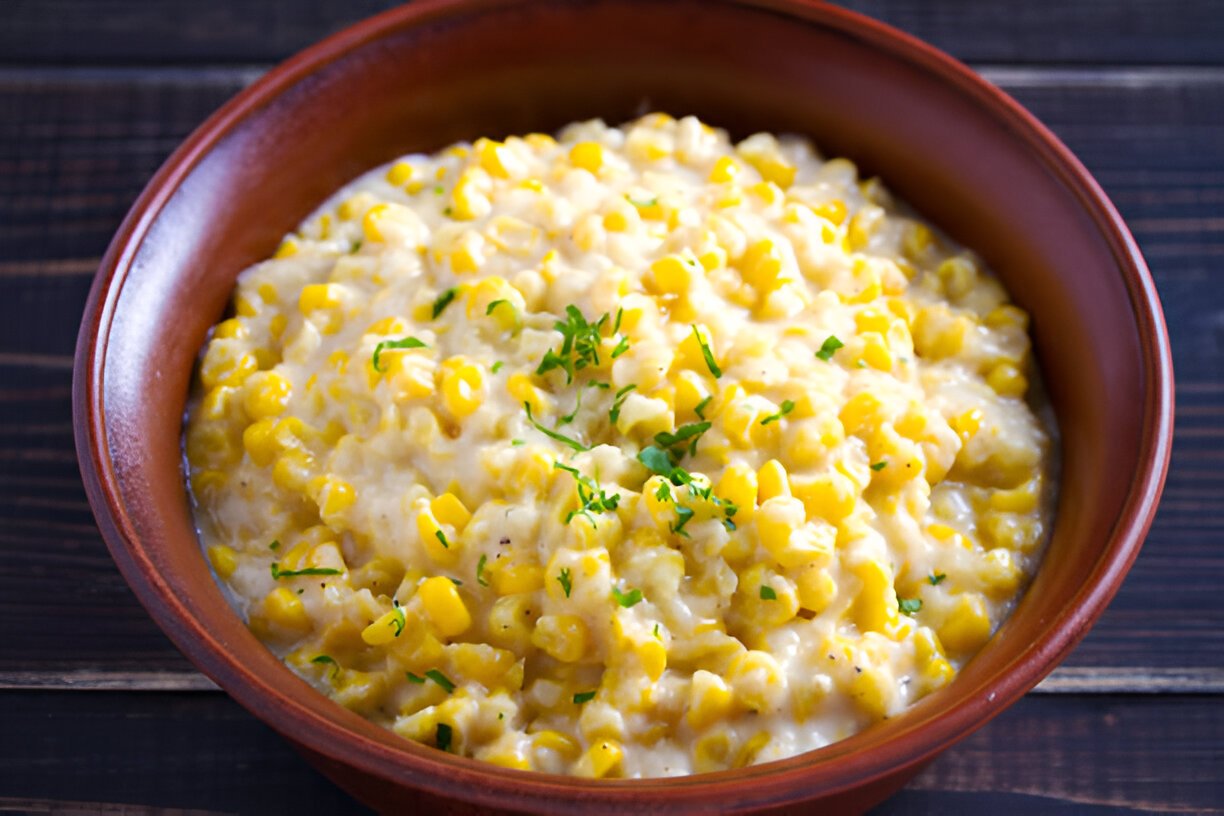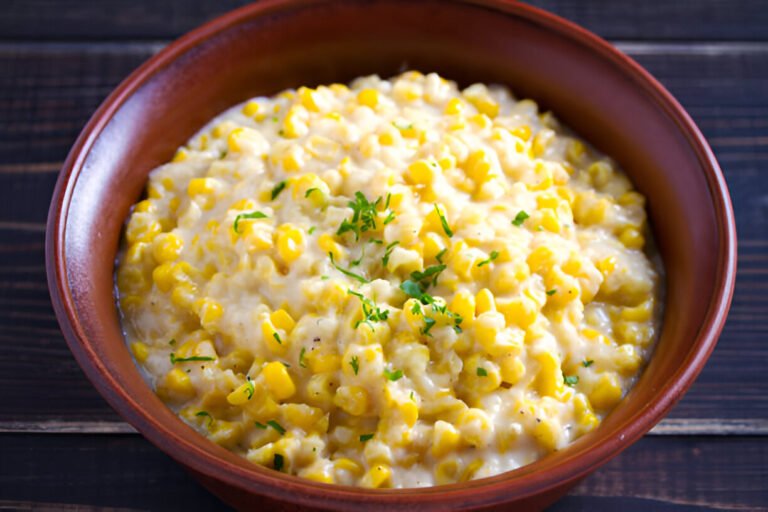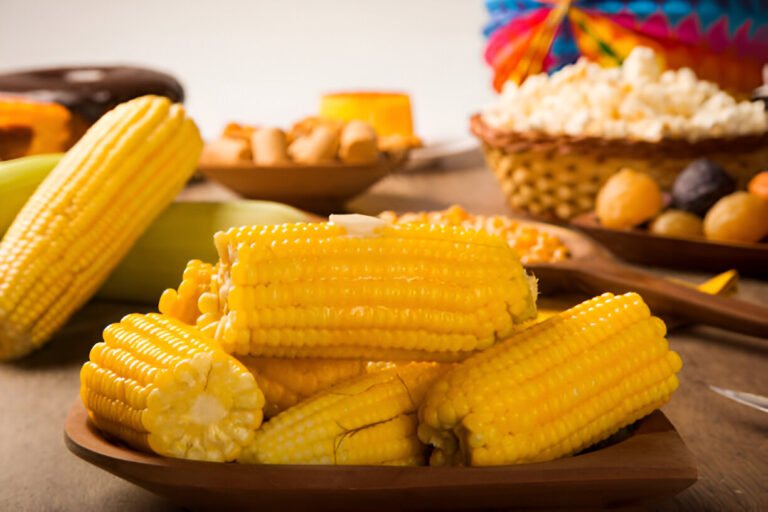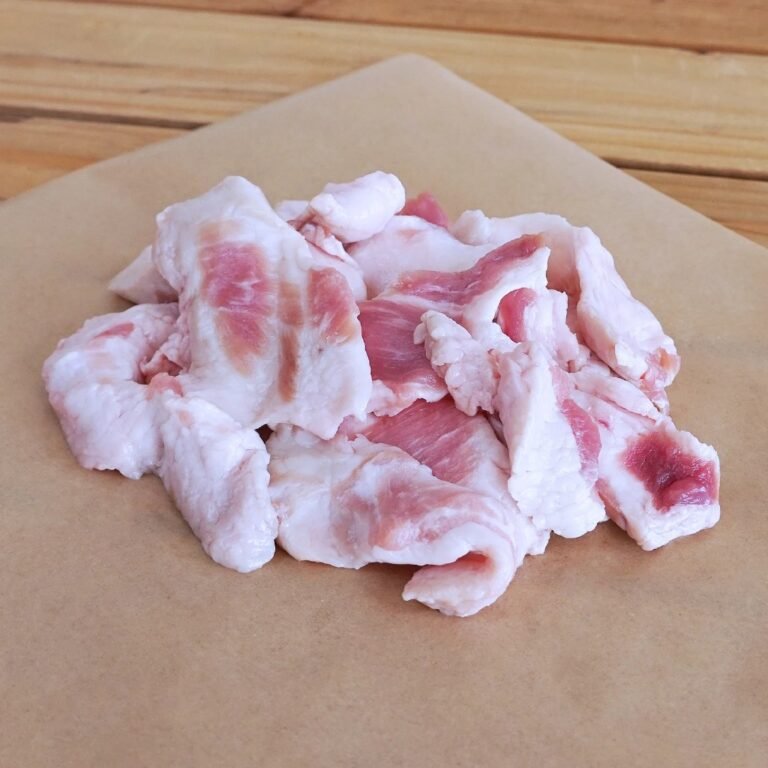How to Freeze Cream Corn: Preserving Freshness & Flavor
Are you a fan of succulent, sweet corn but concerned that it might spoil before you get the chance to fully savor it?
Freezing creamed corn is simple and a great way to ensure you can savor that delicious corn goodness for days.
I remember the first time I learned how to freeze creamed corn; it was like discovering a secret treasure chest of flavor in my freezer.
Today, I’ll share the simple steps to freeze homemade creamed corn. Keep reading.
How Can You Freeze Cream Corn?
- Cool It Down: After cooking your delicious creamed corn, allow it to cool by placing the pan in iced water. This step is essential to prevent bacteria growth during freezing.
- Choose the Right Containers: Opt for containers that resist moisture and vapor. Leave about half an inch of space at the top of each container to accommodate expansion as it freezes.
- Seal It Securely: Make sure to seal the containers tightly to prevent air and moisture from causing freezer burn.
- Freeze: Place the sealed containers in the freezer. Now you can safely store your creamed corn and relish its creamy goodness whenever you desire.
How Long Should Creamed Corn Be Cooked Before Freezing?
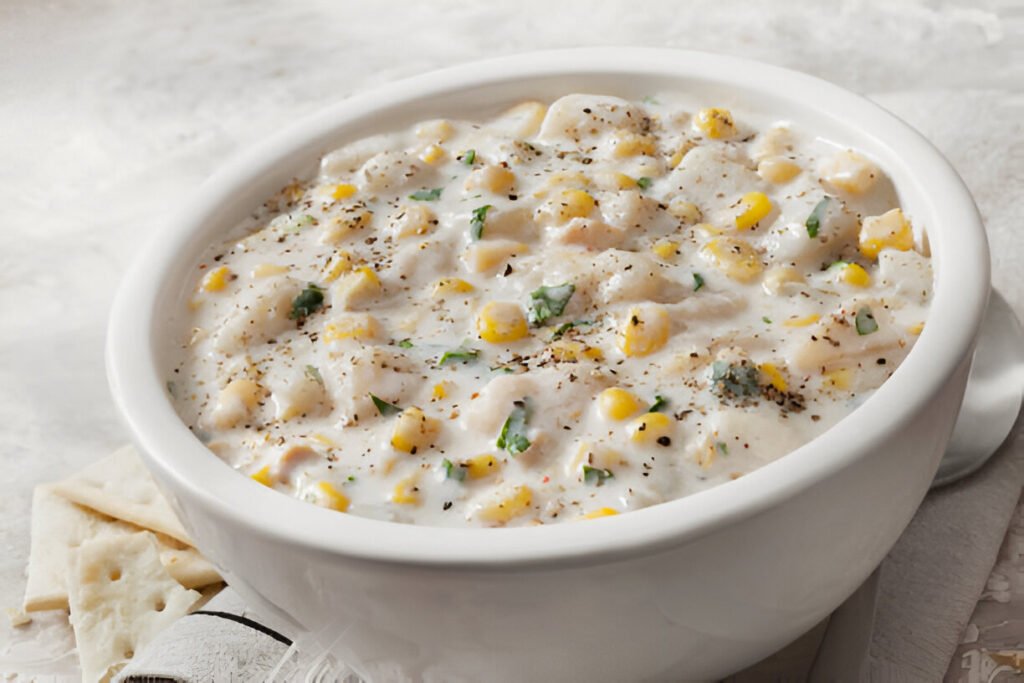
Before freezing creamed corn, it’s important to cook it properly to ensure it stays safe and tasty. Preheat your oven to 300° Fahrenheit and bake the creamed corn for about an hour [1].
The thorough cooking of corn is essential to preserve its flavor and texture during freezing. After baking, let the creamed corn cool on the counter.
“Corn is a greedy crop, as farmers will tell you.”
– Michael Pollan, American Author and Journalist
As such, this cooling step is crucial because freezing hot food can lead to moisture buildup, which may result in ice crystals forming and affecting the quality of your frozen creamed corn.
How Long Can Cream-Style Corn Be Stored In The Fridge?
Keeping it fresh in the fridge is a priority when it comes to homemade cream-style corn. You can store it there for a respectable 4-5 days.
However, freezing is the most effective method for extending its shelf life. Pop it in the freezer, which will stay good for up to 6 months.
This way, you can enjoy the creamy goodness of corn even when it’s not in season. Proper storage and timely consumption are the keys to preserving its taste and texture.
What’s The Best Way To Preserve Cream Style Corn?
Follow these simple steps to preserve your delicious cream-style corn. First, allow the freshly cooked cream-style corn to cool quickly.
Once cooled, it’s time to package it for the freezer. Opt for moisture-resistant pint jars or bags to keep your corn in top shape.
This prevents freezer burn and maintains its flavor. Fill your chosen container, leaving space at the top to accommodate expansion during freezing.
Seal it up tightly, and then freeze away. This method ensures that you can enjoy your creamy corn whenever you crave it, even long after corn season has passed.
| Check out these steps to make canned cream corn better here. |
What Happens If You Skip Blanching Corn Before Freezing?
Skipping the blanching step when freezing corn can lead to several undesirable consequences. Blanching is essential because it helps inactivate natural enzymes present in corn.
These enzymes, if not dealt with, can cause the corn to lose its vibrant color and essential nutrients and even result in changes in flavor and texture.
“Freezing creamed corn isn’t just about preservation; it’s about extending the season of corn’s creamy goodness.”
– Eat Pallet Restaurant & Food Advice
Blanching and quickly chilling the corn helps prevent it from becoming mushy during freezing.
So, with blanching, you can avoid ending up with corn that lacks its natural appeal, tastes different, and has a less pleasant texture.
Is It Better To Freeze Corn in Its Cooked Form Or Raw?
When it comes to freezing corn, the best approach is to cook it before freezing. Boiling and blanching the corn first is crucial in preserving its vibrant color and sweet flavor.
While it may add a few extra minutes to your prep time, this method prevents the corn from becoming chewy or mushy during the freezing and thawing process.
As such, whether you’re planning to enjoy your corn at the peak of corn season or during the colder months, cooking and blanching it before freezing ensures you’ll savor the best corn flavor when you’re ready to enjoy it.
| Related Post: How Do You Keep Corn On The Cob Warm? |
FAQs on Freezing Cream Corn
How do you make frozen cream-style corn thicker?
To make frozen cream-style corn thicker, add a tablespoon of rice flour to the runny mixture and stir until well combined.
If you don’t have rice flour, use alternatives like cornstarch or regular flour as effective thickeners.
Is it necessary to thaw frozen corn before cooking?
No, it is not necessary to thaw frozen corn before cooking. You can cook frozen corn directly without thawing it first. Cooking it frozen is a convenient and time-saving method.
How should you reheat corn that has been frozen?
To reheat frozen corn, you have a couple of options. You can microwave it with a dash of water for moisture or sauté it on the stovetop with oil or butter and your favorite seasonings [2].
Both methods will help you bring back the delicious flavors of your frozen corn.
In A Nutshell
Freezing cream corn is a simple process that ensures you can enjoy this delightful treat year-round.
To sum up, it’s crucial to cool your freshly cooked creamed corn quickly by immersing the pan in ice water.
Then, package it in moisture-vapor-resistant containers, leaving about half an inch of space to account for expansion. Seal these containers tightly to prevent freezer burn.
When considering how long to store creamed corn, remember that it can last 4-5 days in the refrigerator or up to 6 months in the freezer.
Lastly, never skip the blanching step before freezing, as it inactivates enzymes, preserving color, nutrients, and flavor.
References:
- https://www.realsimple.com/home-organizing/cleaning/how-to-clean-an-oven
- https://www.aarp.org/health/healthy-living/info-2022/healthy-cooking-oils.html
